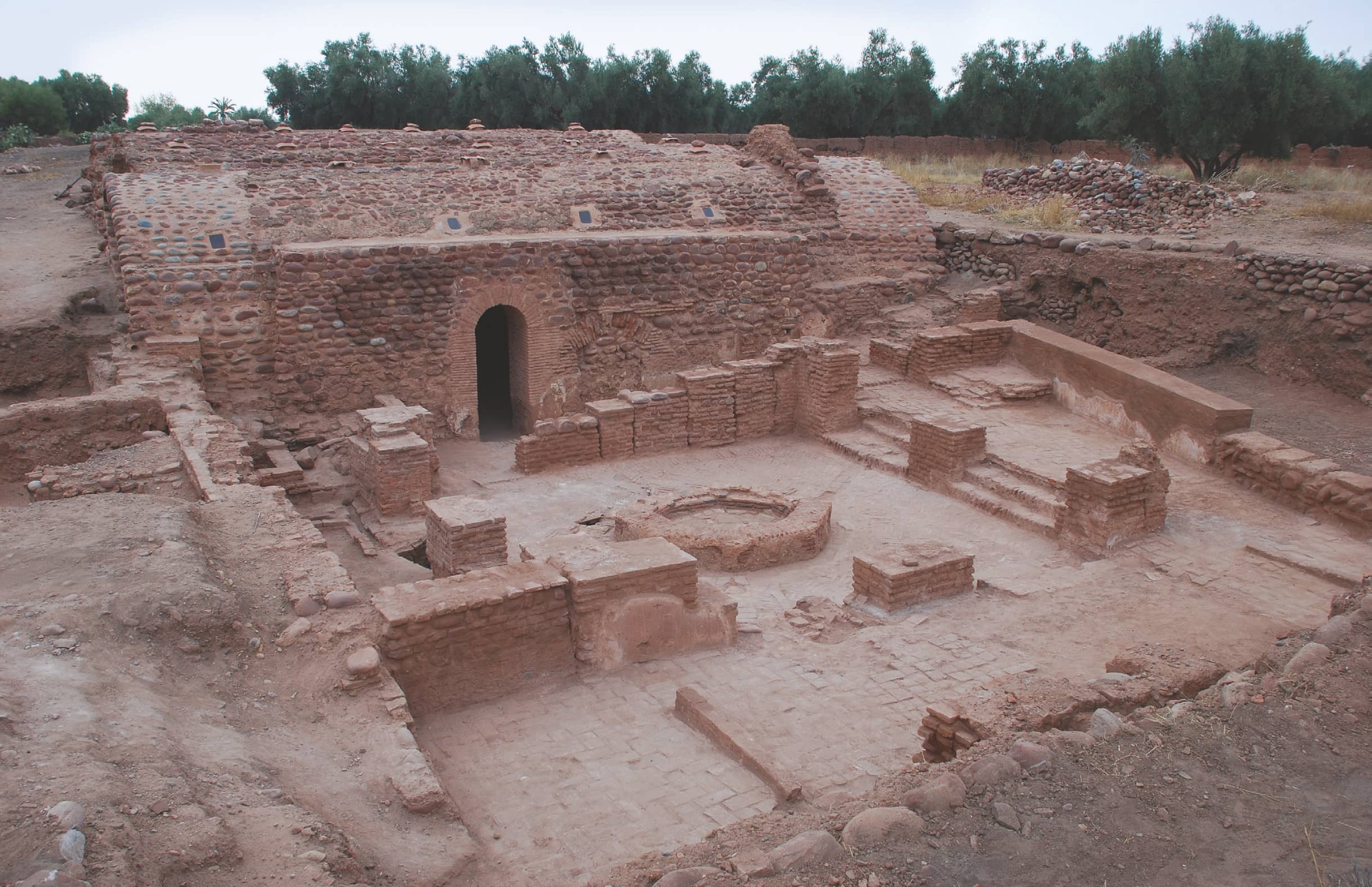
Fifteen years ago, retired archaeologist Ronald Messier, who had spent much of his career excavating the site of Sijilmasa on the northern edge of the Sahara, got a phone call from Frederick Vreeland, a former American ambassador to Morocco and the son of the fashion editor and columnist Diana Vreeland. Vreeland, who was also retired and lived on an estate just south of the bustling city of Marrakech, asked Messier to come and take a look at some nearby ruins that locals called the hammam, the Arabic word for bathhouse. Vreeland was concerned that something important might be slipping away from decay and neglect at the dilapidated site next to a slaughterhouse on the outskirts of the modern village of Ghmat.
Messier visited the site a few days later, and, after just a few minutes of inspecting the tops of three well-worn stone and brick domes poking out of the red soil amid the trash, was convinced it was, indeed, important. “I could tell from the pottery sherds scattered about that the remains went back to the Middle Ages,” says Messier, a professor emeritus at Middle Tennessee State University. “I knew that this was likely the ruins of medieval Aghmat.” The location of Aghmat, which is partially encircled by the foothills of the High Atlas Mountains, was not a mystery. From the ninth through the fourteenth centuries, the city was a key trans-Saharan trading hub. It is well-known from contemporaneous texts and is even noted on a few modern maps. But while many travelers over the centuries had sketched the ruins, and the site was partially surveyed by French archaeologists in the 1990s, it had never been excavated.
This story is from the {{IssueName}} edition of {{MagazineName}}.
Start your 7-day Magzter GOLD free trial to access thousands of curated premium stories, and 9,000+ magazines and newspapers.
Already a subscriber ? Sign In
This story is from the {{IssueName}} edition of {{MagazineName}}.
Start your 7-day Magzter GOLD free trial to access thousands of curated premium stories, and 9,000+ magazines and newspapers.
Already a subscriber? Sign In
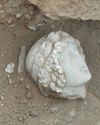
Digs & Discoveries - A Friend For Hercules - Archaeologists discovered a finely carved head depicting Apollo, god of the sun, music, and poetry.
While digging at the crossroads of the two main streets in the ancient city of Philippi in northern Greece, archaeologists discovered a finely carved head depicting Apollo, god of the sun, music, and poetry.
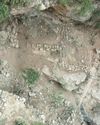
Digs & Discoveries - A Fortress Sanctuary - A sprawling 2,000-year-old fortress in the Zagros Mountains of Iraqi Kurdistan appears to have included a sanctuary dedicated to the ancient Persian water goddess Anahita.
A sprawling 2,000-year-old fortress in the Zagros Mountains of Iraqi Kurdistan appears to have included a sanctuary dedicated to the ancient Persian water goddess Anahita.
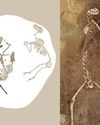
Like Cats And Dogs – Archeologist fund the skeleton of a male Eurasian lynx (Lynx lynx), a notoriously shy creature.
Оn the periphery of Zamárdi, an ancient lakeshore settlement in west-central Hungary, archaeologists uncovered a nearly five-foot-deep beehive-shaped pit with the skeletons of four adult dogs buried in successive shallow layers.
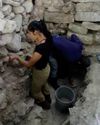
A Dynasty Born In Fire- How an upstart Maya king forged a new social order amid chaos
At the beginning of the Terminal Classic period (ca. A.D. 810-1000), many of the great kingdoms of the southern Maya lowlands-among them Tikal, Palenque, and Calakmul-were being abandoned or collapsing. For many years, scholars have assumed that most, if not all, the other kingdoms across the Maya world must have also been in steep decline.
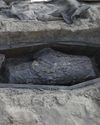
Medical Malfeasance - Archaeologists uncovered two coffins during excavations of a nineteenth-century cemetery in Quebec City that provide evidence of the illicit practice of diverting corpses for the study of human anatomy.
Archaeologists uncovered two coffins during excavations of a nineteenth-century cemetery in Quebec City that provide evidence of the illicit practice of diverting corpses for the study of human anatomy. Starting in 1847, medical students were required to have practical experience studying human anatomy, but legal options to procure cadavers were limited
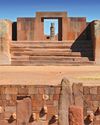
RISE AND FALL OF TIWANAKU
New dating techniques are unraveling the mystery of a sacred Andean city
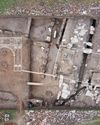
Making a Roman Emperor
A newly discovered monumental arch in Serbia reveals a family's rise to power in the late second century A.D.
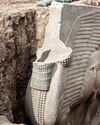
The Assyrian Renaissance
Archaeologists return to Nineveh in northern Iraq, one of the ancient world's grandest imperial capitals

Java's Megalithic Mountain
Across the Indonesian archipelago, people raised immense stones to honor their ancestors
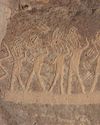
THE SONG IN THE STONE
Located in a desert gorge in southern Peru, Toro Muerto is one of the richest rock art sites in South America. It includes at least 2,600 boulders bearing petroglyphs, many featuring figures known as danzantes who appear to be dancing.